I write a weekly camera collecting blog through my website, but due to the holidays I didn’t have the usual time I spend researching the camera or the camera company, which is something usually like to do. Instead, I decided to do something a little different.
Looking and handling the No.0 Folding Pocket Kodak camera, I noticed that a 35mm film might fit in the camera… as follows is the rest of the story.
The Camera:
The No.0 Folding Pocket Kodak camera was built between 1902 and 1906. It’s a very compact folding camera that takes 121 size film that produced 1 5/8″ x 2 1/2 size film negatives. The No.0 folding pocket Kodak is one of the earliest Kodak folding cameras and measures 5 5/8″ long by 3 1/4″ wide by 1 1/4″ deep when closed, and 3 1/2″ deep with the lens extended and weighs in at 11.5 oz.
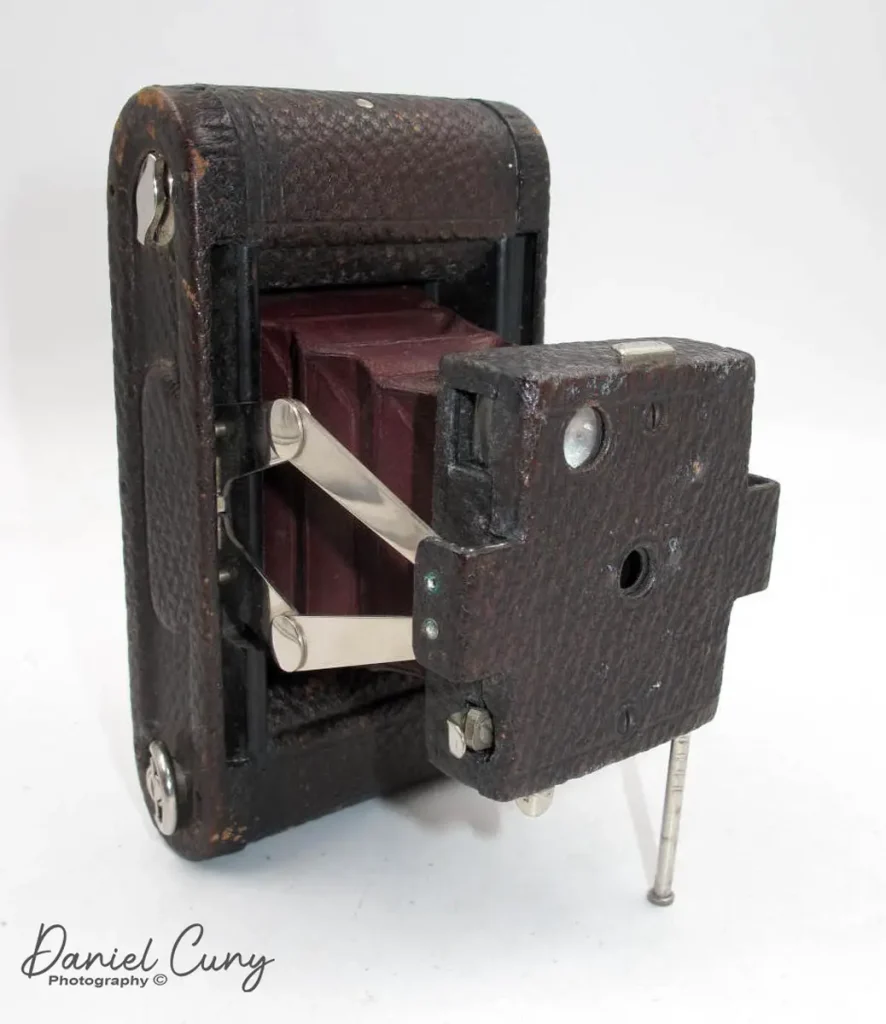
The No.0 folding pocket Kodak is a fundamental camera that was marketed for horizontal shooting. When you pull the lens away from the body, it has a scissor-style hinge system to keep the lens erect, along with a pull-down leg on the front, right side of the camera so the camera can stand on its own. I’m a big fan of the red bellows style cameras produced during this period, and the bellows on my camera are light tight and a vibrant dark red color. The No.0 folding pocket Kodak has a Meniscus lens along with an Eastman Automatic shutter. To open the back of the camera is just a simple latch on the left side of the camera, and it opens on a hinge to load the film.
When you’re holding the No.0 folding pocket Kodak with the lens extended and ready to take a photo, there is only one viewfinder, and it’s for horizontal images. Most cameras have two viewfinders, one for horizontal and one for vertical photos. On the other side of the viewfinder is the shutter release button for normal instant style photos, which I’m guessing is approximately 1/60 sec. On the right side of the extended lens area is a protruding shutter release for time exposures. You click once to open the shutter and a second time to close it. On the left side of the extended lens area is the sliding mechanism, which changes the aperture setting. There are three different aperture settings set by moving the slider out to get to the desired aperture.
Preparing the camera to shoot:
When I played with the camera, I had a roll of 35mm film on my desk. When I opened the back, the camera, it still had the wooden take-up spool in it. I picked up the 35mm film and laid it in the film chamber, and noticed how well it fit there. Pulling the film leader over to the take-up spool, I figured I’d be able to shoot 35mm through this camera.
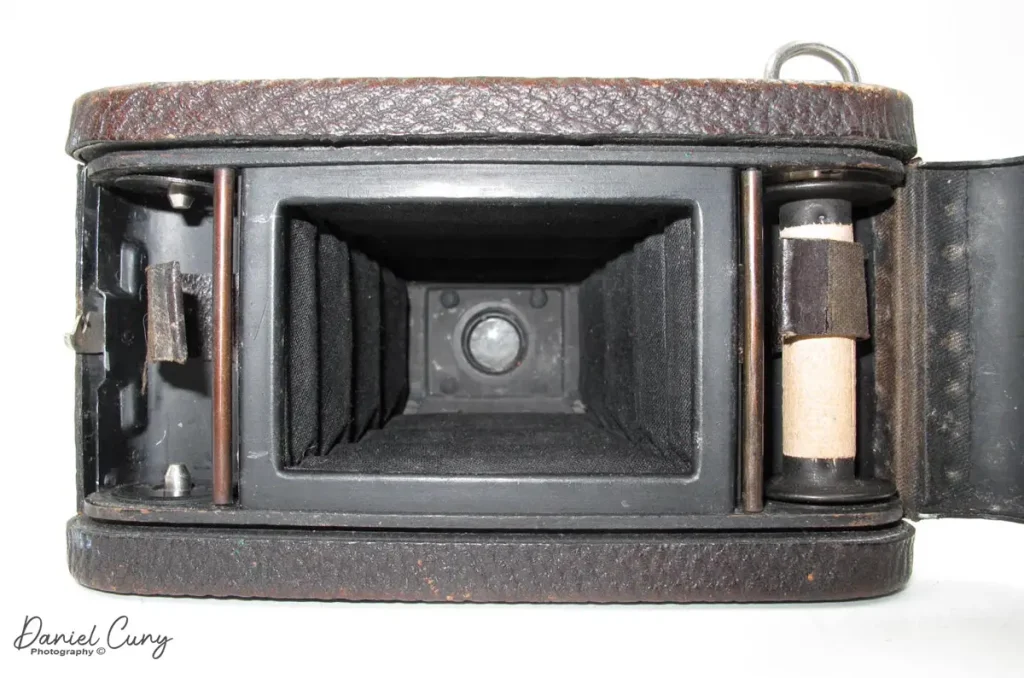
The 35mm film width was too small, so I needed to put something across the film area to keep the film flat when shooting. I had some black masking tape in my office, which I use to mask my light table when shooting glass negatives. I measured the width of 35mm film in the camera and cut some masking tape to fit across the film chamber so the film would lay flat.
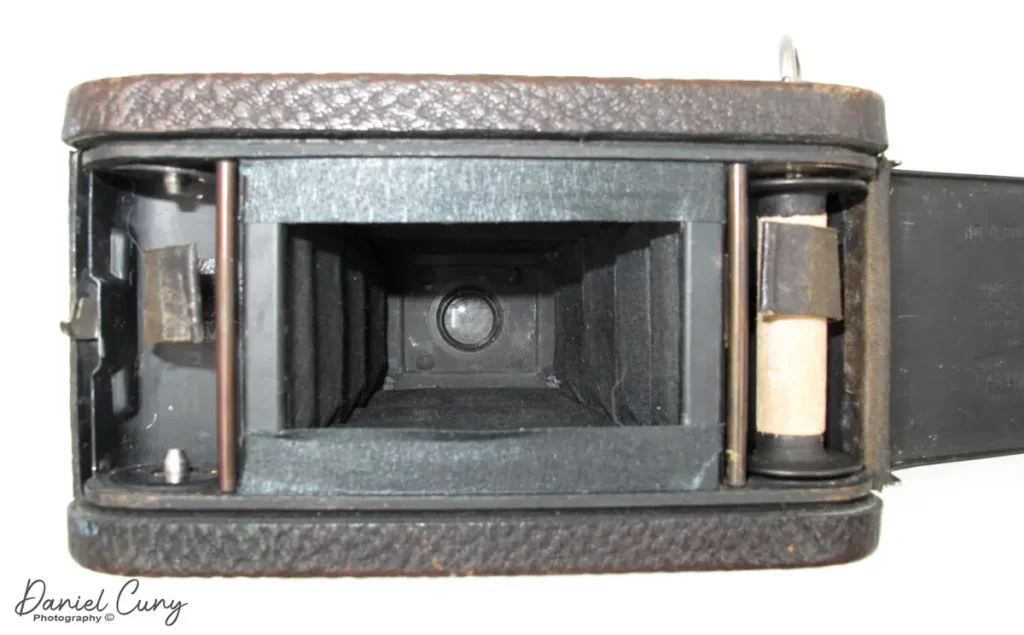
Now I needed to figure out how many turns of the winding lever would take to advance the film to the next frame without overlapping frames. I did this with a dummy roll I had in my office. It takes two full turns of the winding lever to advance to the next frame. It probably is 1 3/4 turns, but I like to keep it simple. There is a red window on the back of the camera, which I needed to block out the light since 35mm film isn’t a paper-backed film like other roll films. I put a couple of black tape layers over the red window to block that light as well.
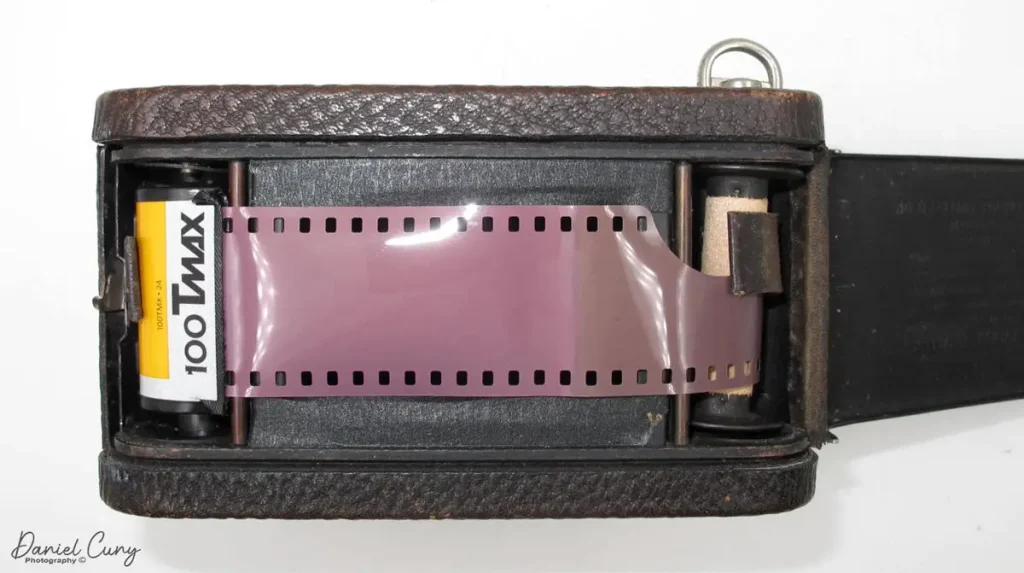
I loaded the film into the camera and took my dogs to the local dog park to try out the camera. Once I took the roll of film, I brought it home to unload the film. There is no rewind on the No.0 folding pocket Kodak. I put the camera into my trusty dark bag for film processing and unloaded the film.
Photos from the camera:
Here are the photos of our local dog park.
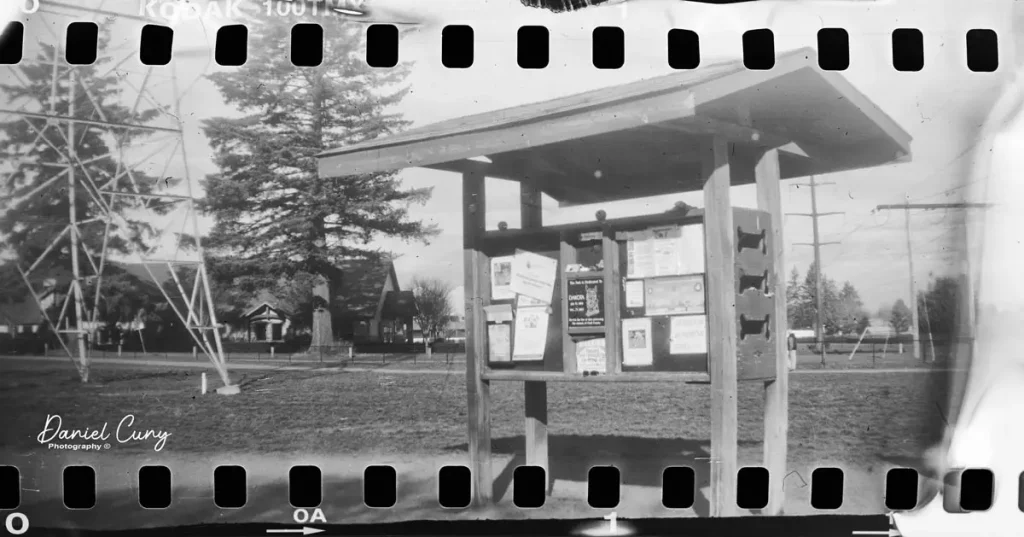
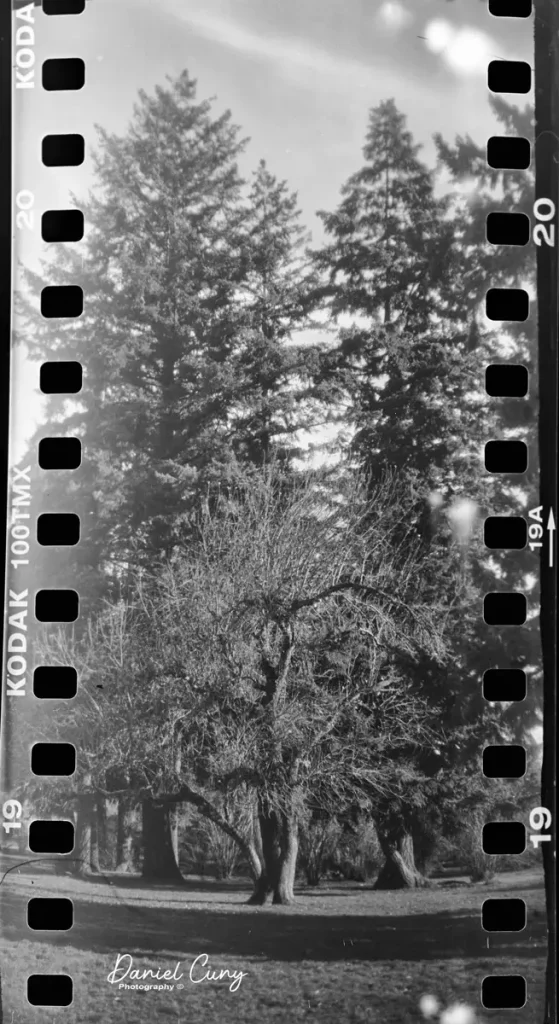
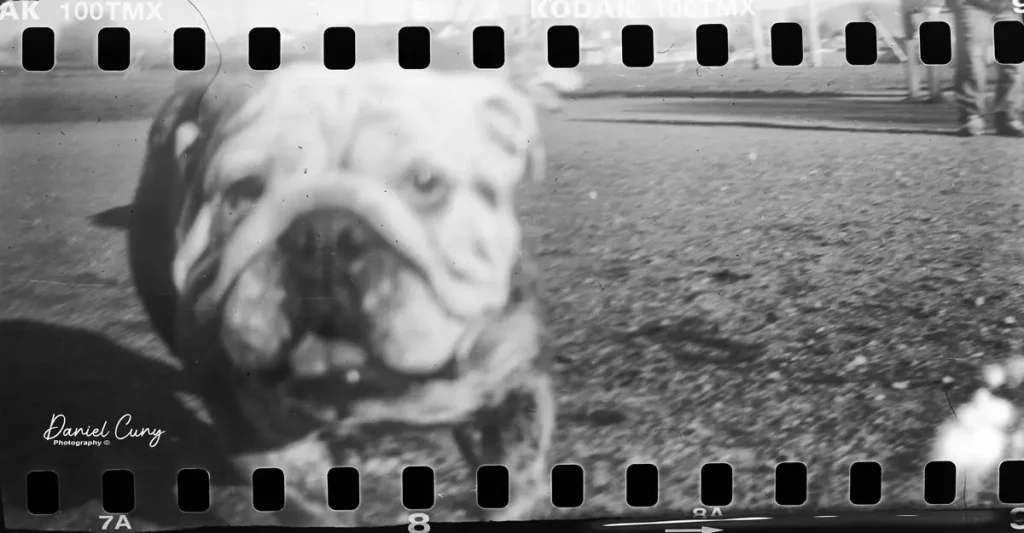
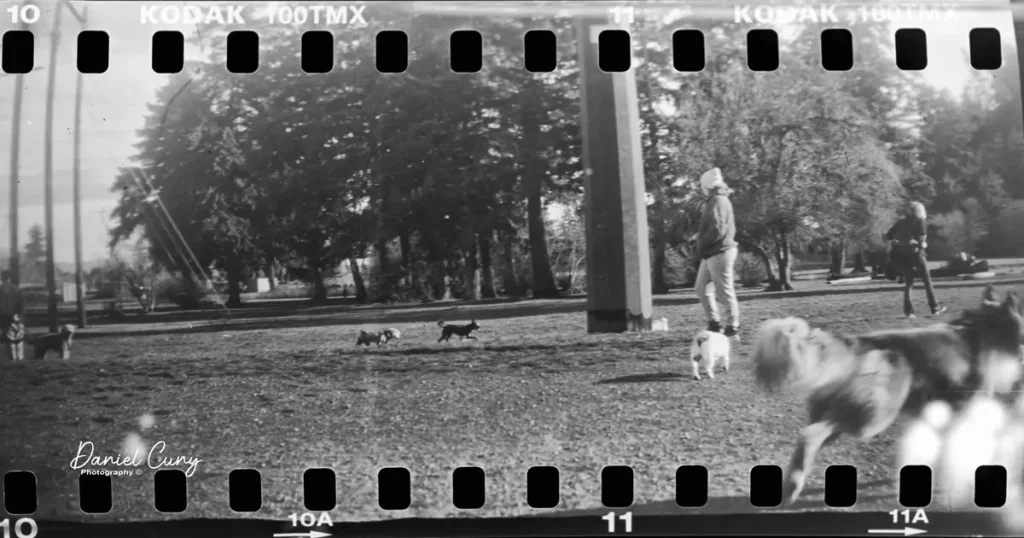
Conclusion:
It was enjoyable to put a film through this 110 plus-year-old camera. There were a couple of hiccups. I hit the time exposure shutter button a couple of times to take the photo. I’m used to having the trigger on the side of the camera instead of on top. The results are pretty good.
Thank you for taking a few minutes to read my camera collecting blog. I enjoy hearing from you about this or any other posts I’ve made so far on my website.
Share this post:
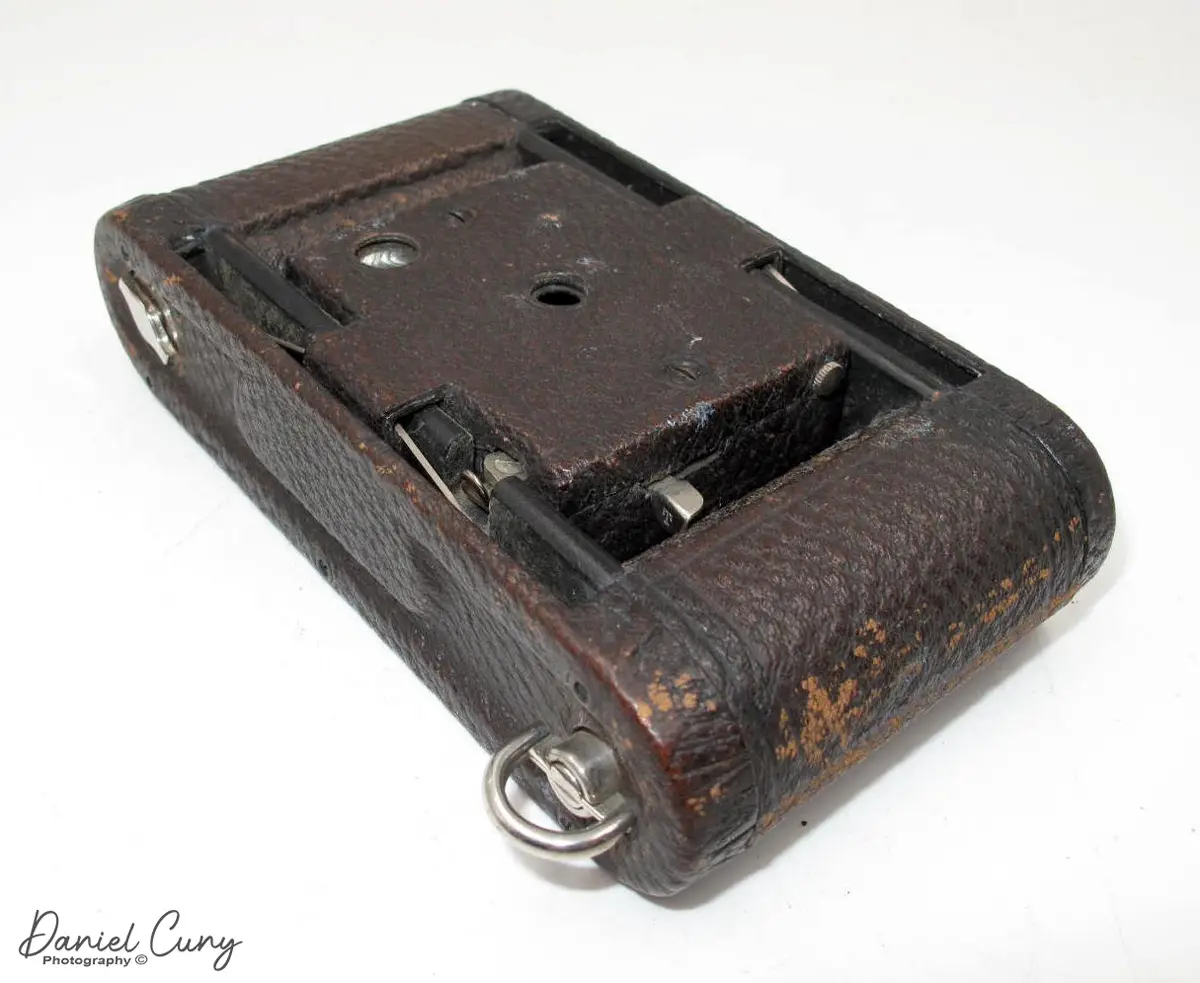








Comments
Martin south of france on Running 35mm Film Through My 110 Year Old No. 0 Folding Pocket Kodak – By Dan Cuny
Comment posted: 23/01/2021
davesurrey on Running 35mm Film Through My 110 Year Old No. 0 Folding Pocket Kodak – By Dan Cuny
Comment posted: 23/01/2021
I have a FPK No 3A which takes slightly larger film (122) which is impossible to get now but I’ve found some adapters so I can use 120 film stock.
It’s great to keep these pieces of history from land fill or just sitting on the shelf unused.
davesurrey on Running 35mm Film Through My 110 Year Old No. 0 Folding Pocket Kodak – By Dan Cuny
Comment posted: 23/01/2021
Jake on Running 35mm Film Through My 110 Year Old No. 0 Folding Pocket Kodak – By Dan Cuny
Comment posted: 23/01/2021
Lance on Running 35mm Film Through My 110 Year Old No. 0 Folding Pocket Kodak – By Dan Cuny
Comment posted: 23/01/2021
Rock on Running 35mm Film Through My 110 Year Old No. 0 Folding Pocket Kodak – By Dan Cuny
Comment posted: 23/01/2021
Raymond Blum on Running 35mm Film Through My 110 Year Old No. 0 Folding Pocket Kodak – By Dan Cuny
Comment posted: 24/01/2021
Matthias Rabiller on Running 35mm Film Through My 110 Year Old No. 0 Folding Pocket Kodak – By Dan Cuny
Comment posted: 24/01/2021
Aloy Anderson on Running 35mm Film Through My 110 Year Old No. 0 Folding Pocket Kodak – By Dan Cuny
Comment posted: 25/01/2021
Comment posted: 25/01/2021
Theo Panagopoulos on Running 35mm Film Through My 110 Year Old No. 0 Folding Pocket Kodak – By Dan Cuny
Comment posted: 25/01/2021
Comment posted: 25/01/2021
Scott Gitlin on Running 35mm Film Through My 110 Year Old No. 0 Folding Pocket Kodak – By Dan Cuny
Comment posted: 25/01/2021
AW on Running 35mm Film Through My 110 Year Old No. 0 Folding Pocket Kodak – By Dan Cuny
Comment posted: 26/01/2021
Does anyone know if all type 121 film cameras will work the same way? Or are there any other old types of film cameras that can work with a standard 35mm cartridge in the same way? There are several type 127 film cameras I like, but they won't fit 35mm.